Victor Papanek’s critical outlook and uproarious calls to politicize design won him a loyal following.

“Today industrial design has put murder on a mass-production basis,” declared Victor Papanek, design provocateur and critic, from the podium of a design activist happening in 1968. “By designing criminally unsafe automobiles that kill or maim,” he roared, “by creating a whole new species of permanent garbage to clutter up the landscape, and by choosing materials and processes that pollute the air we breathe, designers have become a dangerous breed.”
Papanek’s timely polemic—that design was a political tool to be wrested away from corporations and handed back to the public—was concretized in his best-selling 1971 book Design for the Real World: Human Ecology and Social Change, which resembled Rachel Carson’s environmentally apocalyptic Silent Spring and Stewart Brand’s counterculture bible Whole Earth Catalog in its tone and urgency. Translated into more than 20 languages, it was a clarion call to a new generation of designers, particularly students, who, armed with Papanek’s searing critique, demanded new socially relevant curricula and an end to straitjacketed formalist design dicta.
The book brims with ideas that still strike a chord nearly a half century on, and its author’s acerbic prose is most welcome at a time when social inclusivity and accountability have become the standard fare of design conglomerates. Papanek, whose work and ideas are the focus of an exhibition at the Vitra Design Museum, curated by Amelie Klein and myself, vigorously took designers to task for elitism and social exclusion, and he promoted community codesign and pro bono schemes that cast users as the crucial participants throughout the design process.
Diese Geschichte stammt aus der November/December 2018-Ausgabe von Metropolis Magazine.
Starten Sie Ihre 7-tägige kostenlose Testversion von Magzter GOLD, um auf Tausende kuratierte Premium-Storys sowie über 8.000 Zeitschriften und Zeitungen zuzugreifen.
Bereits Abonnent ? Anmelden
Diese Geschichte stammt aus der November/December 2018-Ausgabe von Metropolis Magazine.
Starten Sie Ihre 7-tägige kostenlose Testversion von Magzter GOLD, um auf Tausende kuratierte Premium-Storys sowie über 8.000 Zeitschriften und Zeitungen zuzugreifen.
Bereits Abonnent? Anmelden
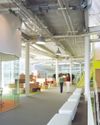
No New Buildings
The energy already embodied in the built environment is a precious unnatural resource. It’s time to start treating it like one.

The Circular Office
Major manufacturers are exploring every avenue to close the loop on workplace furniture.

Signs of Life
Designers, curators, and entrepreneurs are scrambling to make sense of motherhood in a culture that’s often hostile to it.
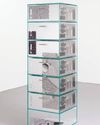
Interspecies Ethic
In probing the relationship between humans and nature, two major exhibitions question the very foundations of design practice.
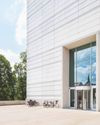
Building on Brand
The Bauhaus turned 100 this year, and a crop of museum buildings sprang up for the celebration.
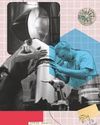
Building for Tomorrow, Today
Radical change in the building industry is desperately needed. And it cannot happen without the building trades.

Strength from Within
Maggie’s Centres, the service-focused cancer support network, eschews clinical design to arm patients in their fight for life.

Next-Level Living
The availability of attractive, hospitality-grade products on the market means everyday consumers can live the high life at home.
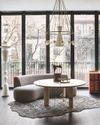
Mi Casa, Su Casa
Casa Perfect creates a memorable shopping experience in lavish private homes.

Enter The Culinarium
AvroKO imagines the future of residential amenities—where convenience, comfort, and sustainability meet.